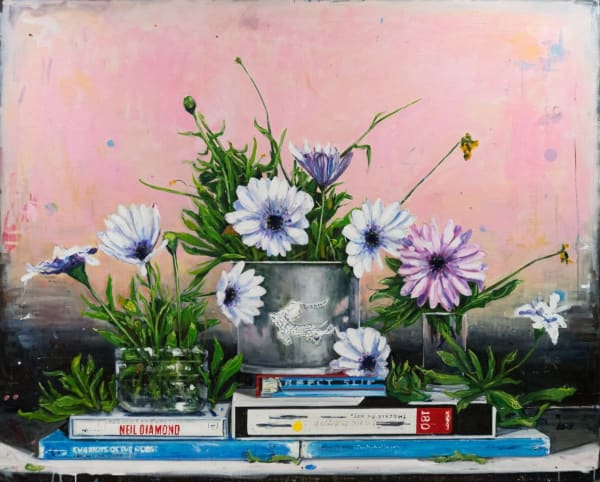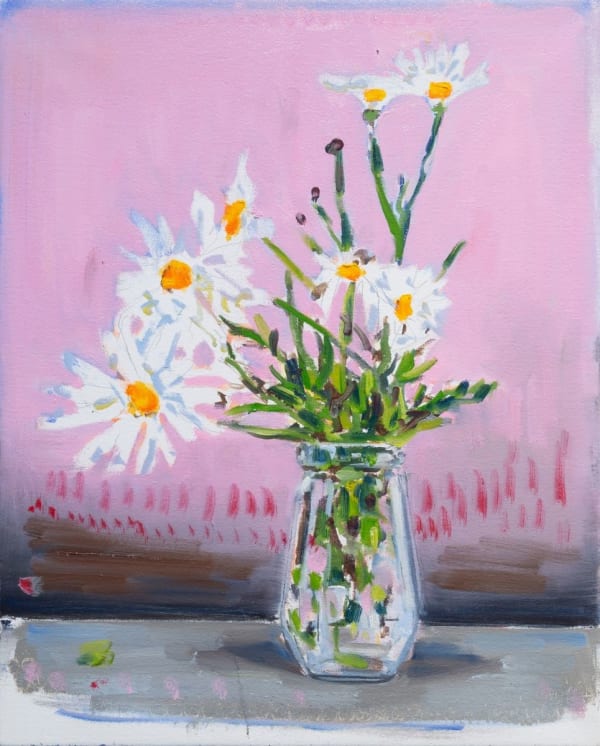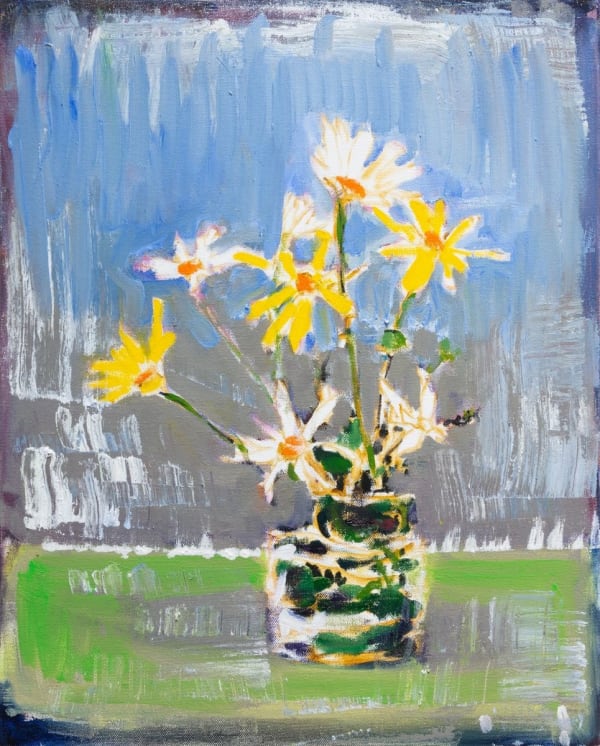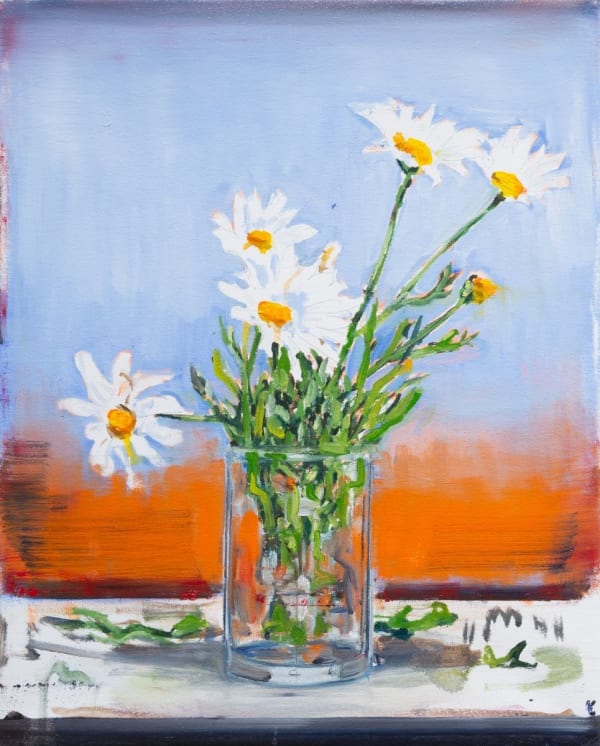Fabrizio Biviano: Positive Aspects of Negative Thinking
-
 Fabrizio BivianoAn Exercise in Repetition, 2020oil on Belgian linen91 x 76 cm
Fabrizio BivianoAn Exercise in Repetition, 2020oil on Belgian linen91 x 76 cm -
 Fabrizio BivianoGone With the Wind – 2nd Half, 2020oil on Belgian linen91 x 76 cm
Fabrizio BivianoGone With the Wind – 2nd Half, 2020oil on Belgian linen91 x 76 cm -
 Fabrizio BivianoJust South of Nowhere, 2020oil on Belgian linen91 x 76 cm
Fabrizio BivianoJust South of Nowhere, 2020oil on Belgian linen91 x 76 cm -
 Fabrizio BivianoMy Teeth are Sharp and My Mouth is Full, 2020oil on Belgian linen122 x 152 cm
Fabrizio BivianoMy Teeth are Sharp and My Mouth is Full, 2020oil on Belgian linen122 x 152 cm -
 Fabrizio BivianoPushing Daisies I, 2020oil on canvas51 x 41 cm
Fabrizio BivianoPushing Daisies I, 2020oil on canvas51 x 41 cm -
 Fabrizio BivianoPushing Daisies II, 2020oil on canvas51 x 41 cm
Fabrizio BivianoPushing Daisies II, 2020oil on canvas51 x 41 cm -
 Fabrizio BivianoPushing Daisies III, 2020oil on canvas51 x 41 cm
Fabrizio BivianoPushing Daisies III, 2020oil on canvas51 x 41 cm -
 Fabrizio BivianoPushing Daisies IV, 2020oil on canvas51 x 41 cm
Fabrizio BivianoPushing Daisies IV, 2020oil on canvas51 x 41 cm -
 Fabrizio BivianoPushing Daisies V, 2020oil on canvas51 x 41 cm
Fabrizio BivianoPushing Daisies V, 2020oil on canvas51 x 41 cm -
 Fabrizio BivianoPushing Daisies VI, 2020oil on canvas51 x 41 cm
Fabrizio BivianoPushing Daisies VI, 2020oil on canvas51 x 41 cm -
 Fabrizio BivianoRed Sails in the Sunset, 2020oil on Belgian linen91 x 76 cm
Fabrizio BivianoRed Sails in the Sunset, 2020oil on Belgian linen91 x 76 cm -
 Fabrizio BivianoThe Walton Experience, 2020oil on Belgian linen91 x 76 cm
Fabrizio BivianoThe Walton Experience, 2020oil on Belgian linen91 x 76 cm -
 Fabrizio BivianoThere are Some Things You Cant Cover Up With Lipstick and Powder, 2020oil on Belgian linen122 x 152 cm
Fabrizio BivianoThere are Some Things You Cant Cover Up With Lipstick and Powder, 2020oil on Belgian linen122 x 152 cm
Fabrizio Biviano reworks the conventions of Dutch still life painting to explore the contemporary currency of objects as embodiments of memory and identity. Reflecting on his own experiences of lapsed time and loss, the artist grapples with the irreconcilable forces of transience and permanence, absence and presence, that shape human life.
Biviano’s latest series continues his self-referential approach to the still life genre. He explores how objects function as mnemonic manifestations of its previous owner; tangible surrogates for lost moments and encrypted memories. Driving this series is a meditation on mortality, building on the Vanitas tradition of the sixteenth and seventeenth centuries.
Embedded with personal and cultural references, his paintings function as portraits – of the artist himself, and of a particular moment in time. He contemplates the items that represent him; that will one day transcend him. Collections of books, videos and tapes are crested with disposable coffee cups, gelato cups and florals, creating conference` between that which endures and that which fades away. Notions of consumption mingle with reflections on obsolescence as Biviano responds to the accumulation and disposability of things in our materialist milieu. Within his private orbit of objecthood, the motif of flowers further summons the futility of pleasure and the ephemerality of beauty. Incorporating daisies sourced from suburban parts of Eastern Melbourne where he lives, Biviano plays with the duality of this flower as an expression of optimism, joy, and mortality – via the euphemism ‘pushing daisies’.
Appearing in every painting is the azure book spine of Albert Camus’ essay The Myth of Sisyphus (1942), which philosophically probes the eponymous figure from Greek mythology who was condemned by the Gods to eternally push a rock up a mountain. For Camus, Sisyphus represented the absurdity and meaninglessness of modern existence and the futility of toiling away at the same job day in day out.
Biviano contemplates this idea in the context of the still life genre, looking at notions of repetition and image saturation. ‘How many paintings of books and flowers does the world need? How long can we keep churning out the same iconography?’, the artist ponders. The genre’s ostensible immortality buttresses his existential wrestles with meaning and mortality. And yet, Biviano recognises repetition as a profound raison d'être; a conduit of catharsis, and of purpose. Just as Sisyphus found resolve in his toil, so too does Biviano’s own painterly pursuits enrich his reality. He explains, ‘if we realise we don’t have a rock to push, then what do we do?’.
Rendered with a brighter, warmer palette and looser brushstrokes than previous series, these paintings harness the immediacy of the present to celebrate the act and action of living. Each arrangement is amplified against tonally vacant backgrounds, soldering the viewer’s focus to the foreground; to the vibrancy of the here and now. Moments of abstraction break the surface – flicks and scrapes of paint that serve as painterly tallies of time. The paintings embrace the rock, the toil, the repetition, and encourage us to do the same.

















